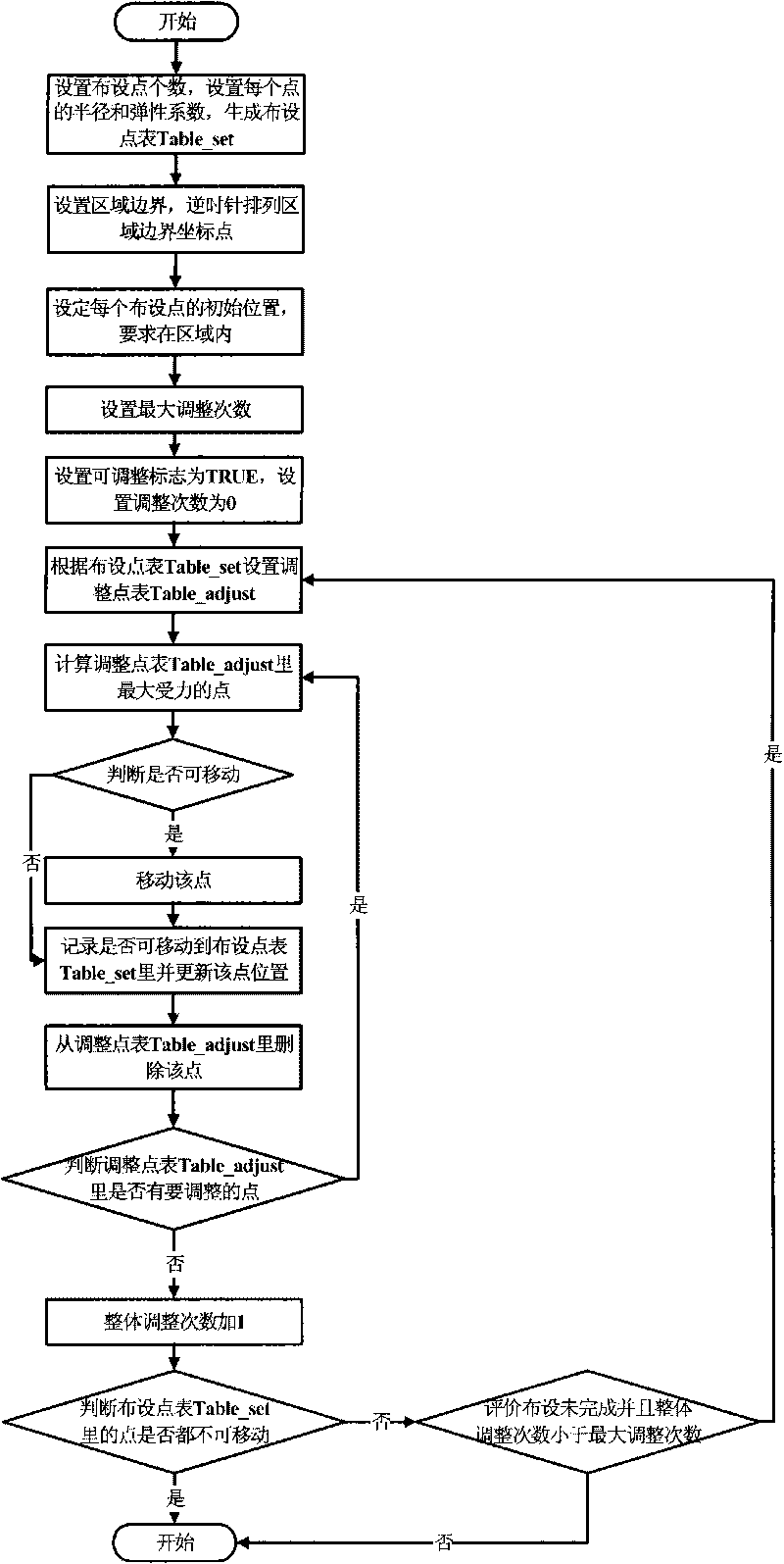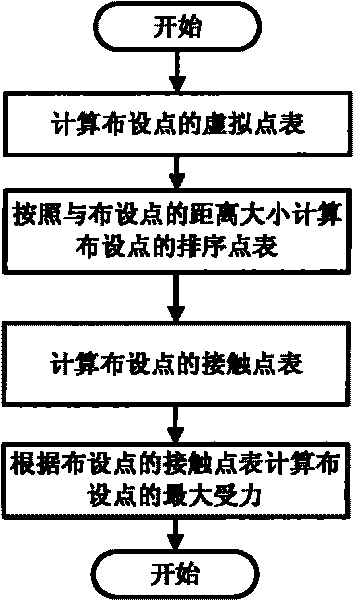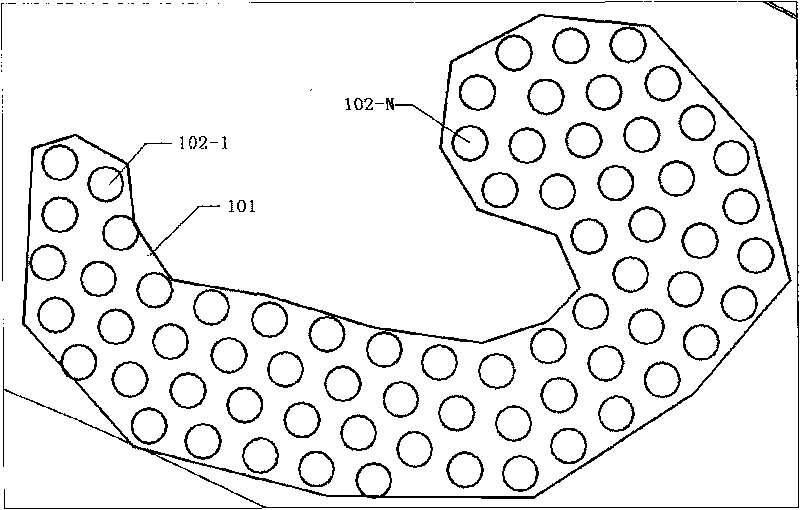Method for distributing regions and setting points of multiple-quantity and multiple-type sensors
A sensor, multi-type technology, applied in the fields of instruments, electrical digital data processing, special data processing applications, etc., can solve the problems of increasing complexity of layout selection, inability to meet sensor layout requirements, and artificial inability to meet needs, etc.
- Summary
- Abstract
- Description
- Claims
- Application Information
AI Technical Summary
Problems solved by technology
Method used
Image
Examples
Embodiment Construction
[0026] refer to Figure 1 to Figure 3 , the present invention calculates the elastic mechanical force of each sensor layout point, and continuously adjusts the position of the sensor layout point according to the elastic mechanical force of each sensor until the position of the sensor layout point is stable. The principle of the present invention is that the radius of action of the layout point is the radius of the ideal elastic sphere, the initial position of the layout point is given in any way and the initial position is guaranteed to be included in the layout area, and then by calculating the elastic mechanical stress of each layout point Force and adjust the position one by one to expand the layout point to the entire layout area. This method calculates the elastic mechanical force of each layout point and adjusts the position of each layout point according to the force, and finally arranges each layout point to a reasonable position through iteration.
[0027] The work ...
PUM
 Login to View More
Login to View More Abstract
Description
Claims
Application Information
 Login to View More
Login to View More - R&D
- Intellectual Property
- Life Sciences
- Materials
- Tech Scout
- Unparalleled Data Quality
- Higher Quality Content
- 60% Fewer Hallucinations
Browse by: Latest US Patents, China's latest patents, Technical Efficacy Thesaurus, Application Domain, Technology Topic, Popular Technical Reports.
© 2025 PatSnap. All rights reserved.Legal|Privacy policy|Modern Slavery Act Transparency Statement|Sitemap|About US| Contact US: help@patsnap.com



